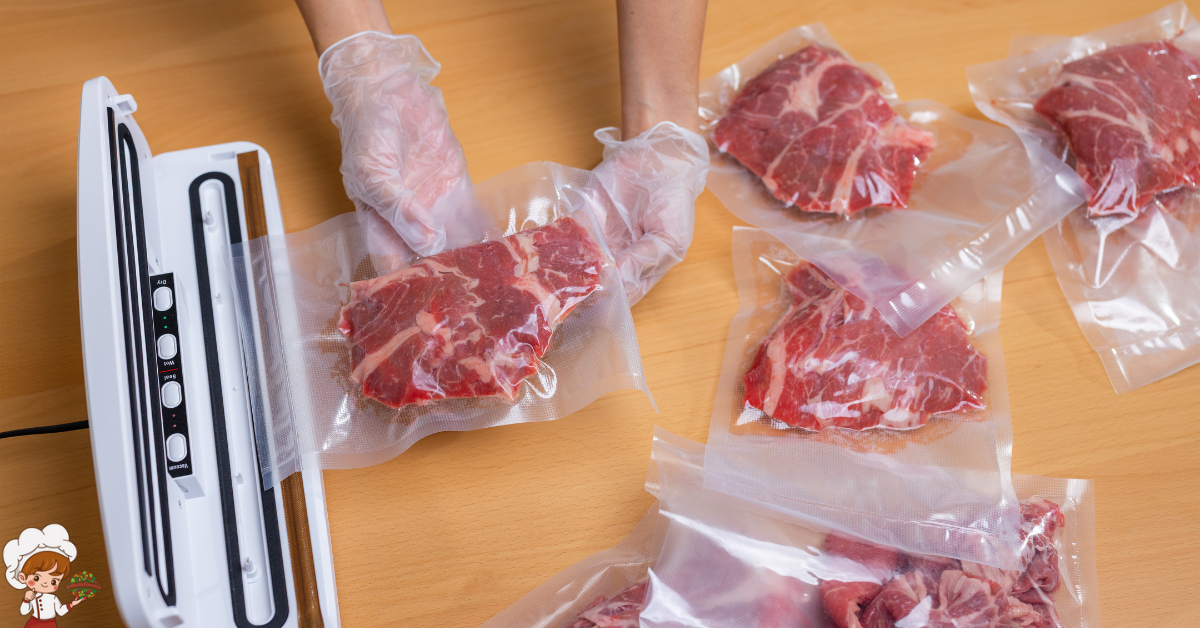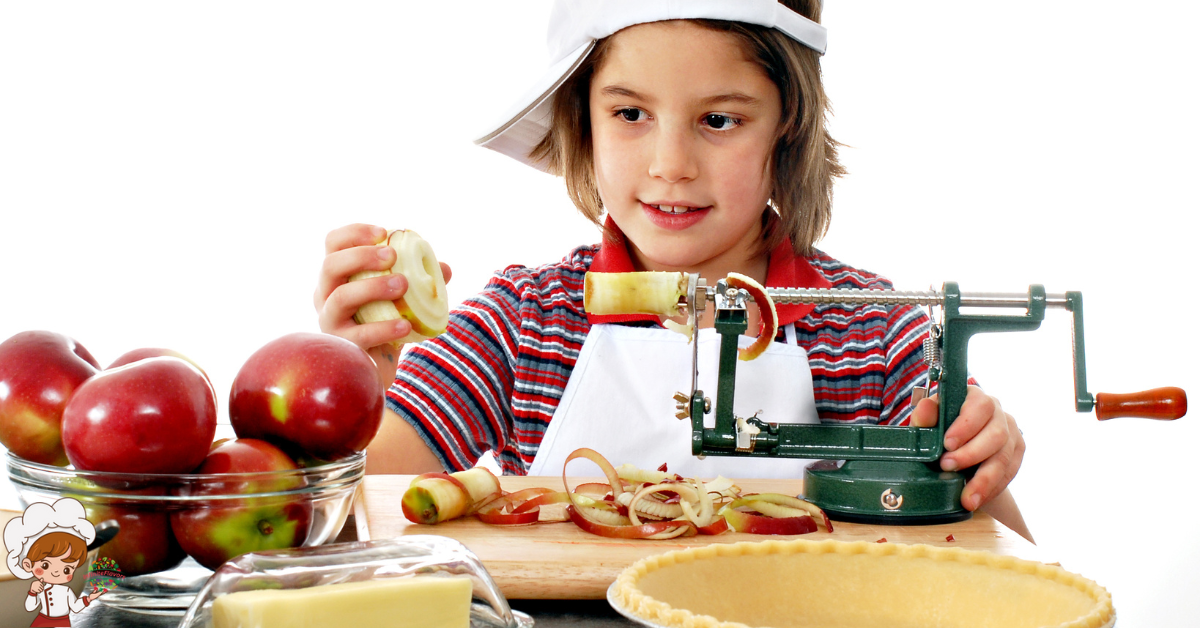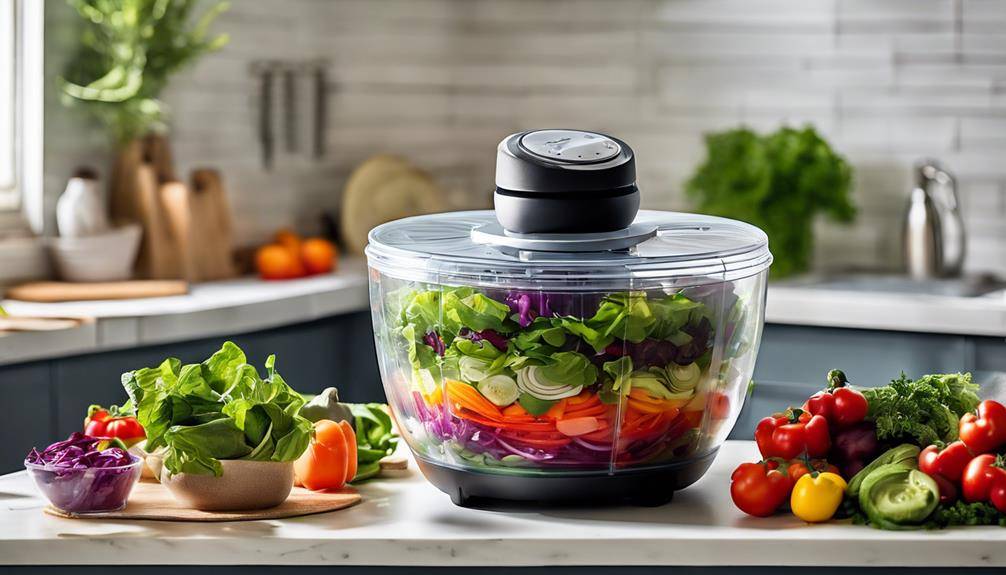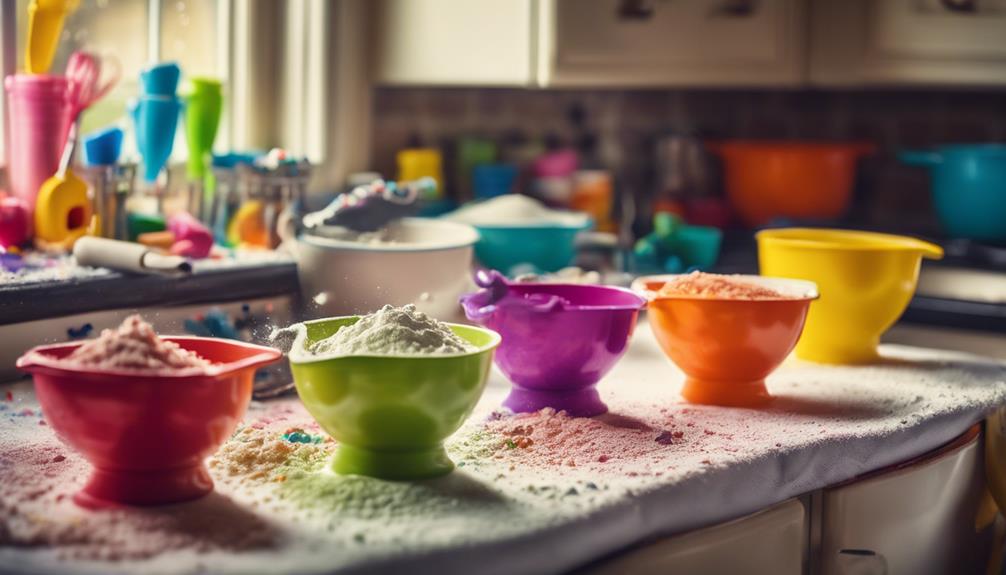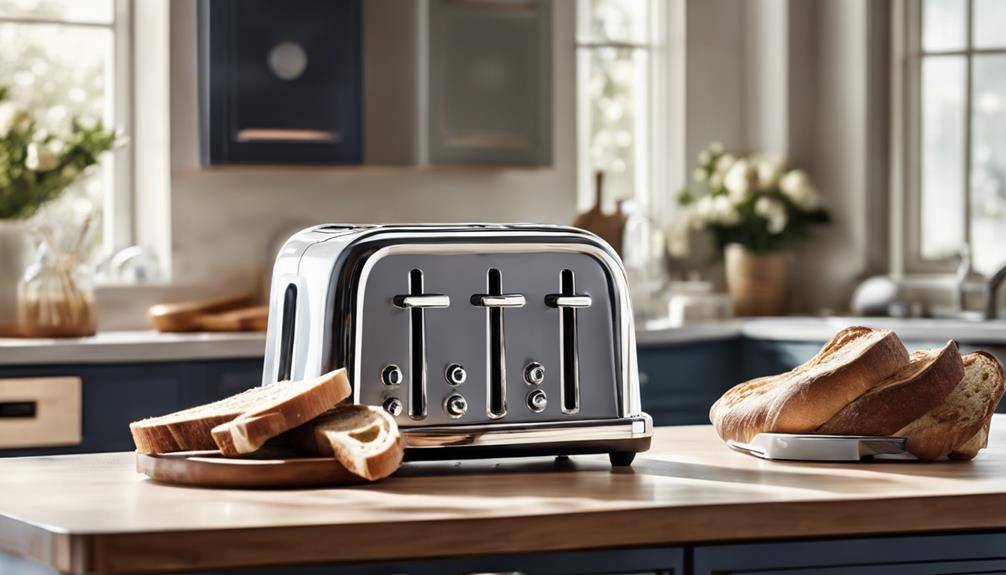The Best Stainless Steel Pans With Even Heat Distribution
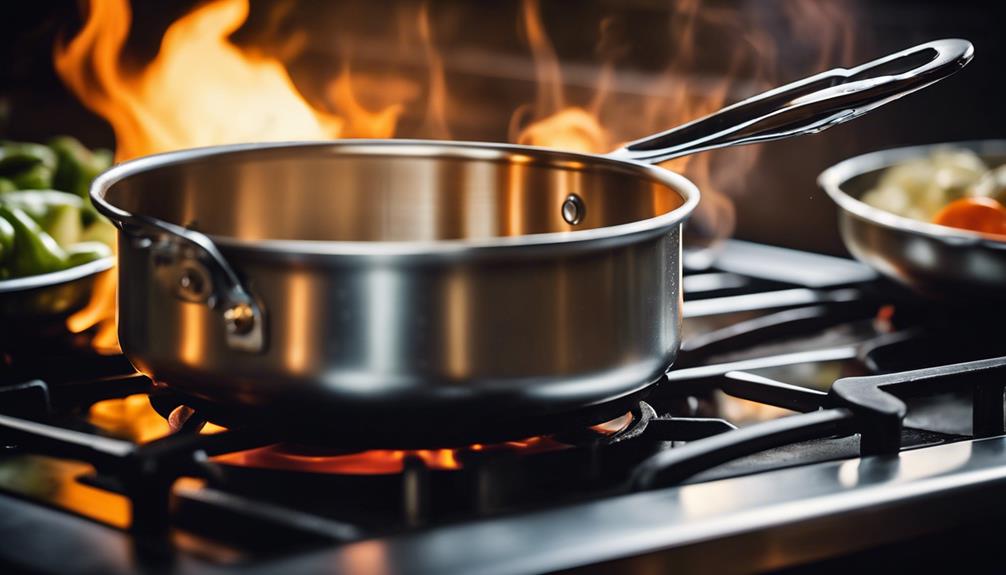
If you’re looking for stainless steel pans with even heat distribution, consider those with an aluminum or copper core. This construction enhances thermal conductivity, preventing hot spots while cooking. Preheating your pan on medium heat is essential to guarantee uniform cooking and avoid sticking. Opt for higher-quality options that feature seamless welding for durability and ease of cleaning. Brands like All-Clad boast superior heat distribution, while Cuisinart offers budget-friendly choices. With proper care, these pans can last for years. If you want tips on maintaining and selecting the right pans, the next section will provide valuable insights.
Cook Like a Pro—Click Here To Get Your Perfect Pan Today
Benefits of Stainless Steel Pans
When you choose stainless steel pans, you’re investing in durability and versatility that can elevate your cooking experience. These pans are built to last, resisting scratches and dents that often plague other materials. Their non-reactive surface means you can cook a variety of dishes without worrying about harmful reactions with acidic ingredients like tomatoes or citrus. This feature not only enhances the flavor of your meals but also contributes to health benefits by ensuring your food stays pure and uncontaminated.
Stainless steel pans offer exceptional cooking versatility, allowing you to sauté, sear, and even bake. Whether you’re preparing a delicate fish fillet or a hearty stew, you can trust that these pans will perform beautifully. They’re compatible with all types of cooktops, including induction, which makes them a practical choice for any kitchen. The reflective surface also aids in heat management, allowing you to monitor your cooking progress at a glance.
Moreover, stainless steel pans are dishwasher-safe, making cleanup a breeze. You won’t spend precious time scrubbing away stuck-on food, which means you can enjoy your meals more and worry less about post-cooking chores. The longevity of these pans means you won’t have to replace them often, further adding to their value. By incorporating stainless steel into your cooking routine, you’re not just choosing a tool; you’re enhancing your culinary journey.
Understanding Heat Distribution
When you’re cooking with stainless steel pans, understanding heat distribution is vital for achieving great results. Even heating guarantees that your food cooks uniformly, while the conductivity of the material plays a key role in this process. By mastering the right cooking techniques, you can maximize efficiency and enhance your culinary skills.
Cook Like a Pro—Click Here To Get Your Perfect Pan Today
Importance of Even Heating
Even heating is essential in stainless steel pans, as it guarantees that your food cooks uniformly without hot spots that can burn or undercook portions. When you use a pan that distributes heat evenly, you’ll notice a significant improvement in cooking consistency. This means that whether you’re searing meat or sautéing vegetables, everything cooks at the same rate, allowing you to achieve the best flavors and textures.
Another key benefit of even heating is enhanced heat retention. When the pan maintains a steady temperature, it keeps your food warm longer, reducing the chances of rapid cooling when you remove it from the heat. This is particularly important for dishes that need to rest or for serving meals at the right temperature.
Additionally, even heating helps you manage cooking times better, so you can focus on perfecting your recipes. You’ll find that with consistent heat distribution, you’ll avoid the frustration of having to constantly adjust your cooking technique or time. Overall, investing in stainless steel pans with excellent heat distribution leads to more enjoyable and successful cooking experiences.
Material Conductivity Explained
Understanding material conductivity is essential for selecting the right stainless steel pans, as it directly impacts how heat is distributed across the cooking surface. When you cook, the thermal conductivity of your pan determines how evenly and efficiently heat transfers from the burner to your food. Stainless steel alone doesn’t conduct heat well, which is why high-quality pans often have an aluminum or copper core. These materials have superior thermal conductivity, allowing for faster and more uniform heat distribution.
Cooking Techniques for Efficiency
Choosing the right cooking techniques can maximize the efficiency of heat distribution in your stainless steel pans, leading to better results in your meals. When you use sautéing techniques, you’re harnessing the pan’s ability to evenly distribute heat, which helps in achieving that perfect golden-brown color on your ingredients. Start by preheating your pan before adding oil; this guarantees the oil heats evenly, preventing sticking and promoting better browning.
On the other hand, if you’re leaning towards slow cooking, be mindful of the temperature settings. Stainless steel pans retain heat well, so you want to use lower heat settings to avoid burning your food. This method allows flavors to meld beautifully while keeping your meal tender.
Additionally, when you’re using these techniques, remember to stir or move your ingredients around occasionally. This practice guarantees that every part of your dish gets the same amount of heat, preventing hot spots. By mastering these cooking techniques, you’ll not only enhance your culinary skills but also make the most out of your stainless steel pans, yielding delicious, evenly cooked meals every time.
Key Features to Consider
When selecting stainless steel pans, you should prioritize features like durability, heat conductivity, and ease of maintenance. Durability is key; you want pans that withstand the rigors of daily cooking without warping or scratching. High-quality stainless steel can resist corrosion and staining, guaranteeing your investment lasts.
Heat conductivity is another vital factor. Look for pans with a thick base or those that feature a copper or aluminum core. These materials enhance heat retention and distribution, allowing for even cooking. You don’t want hot spots that can lead to unevenly cooked meals, so selecting a pan that efficiently retains heat will make a noticeable difference in your cooking.
The surface finish of the pans also matters. A brushed or polished finish can offer both aesthetic appeal and practical benefits. A polished surface is often easier to clean and can help prevent food from sticking, while a brushed finish can provide better resistance to scratches.
Ease of maintenance can’t be overlooked either. Some stainless steel pans are dishwasher safe, which can save you time and effort after cooking. However, even if they’re safe to wash in the dishwasher, hand washing can help maintain their appearance and longevity.
Lastly, consider the weight of the pans. Heavier pans often provide better heat retention and control, making them easier to handle. By keeping these key features in mind, you’ll guarantee a satisfying cooking experience with your stainless steel pans.
Cook Like a Pro—Click Here To Get Your Perfect Pan Today
Types of Stainless Steel Cookware
When choosing stainless steel cookware, you should consider the material composition and how the pans are constructed. Different combinations of metals and techniques can greatly affect performance and durability. Let’s explore these factors to help you make an informed decision.
Cookware Material Composition
Stainless steel cookware typically contains varying compositions of chromium and nickel, which enhance durability and resistance to rust. These elements are essential in determining the metal properties of the cookware you use. For instance, 18/10 stainless steel consists of 18% chromium and 10% nickel, providing excellent corrosion resistance and a polished finish. This composition makes it a preferred choice for many cooks.
Different cookware alloys offer distinct benefits. For example, 18/0 stainless steel, which lacks nickel, is magnetic and often used for induction cooking. However, it may not be as resistant to corrosion. You’ll find that the choice of stainless steel alloy impacts not just durability, but also how food interacts with the surface.
The right combination of metals can also influence heat distribution. Higher nickel content generally means better heat retention, allowing for even cooking. When selecting stainless steel cookware, consider these metal properties to guarantee you’re getting pans that meet your cooking needs effectively. Understanding these compositions helps you choose cookware that lasts and performs well in your kitchen.
Cook Like a Pro—Click Here To Get Your Perfect Pan Today
Pan Construction Techniques
Various construction techniques define the types of stainless steel cookware available, each offering unique advantages for different cooking styles. One popular method is pan layering, where different metals are fused together to enhance heat distribution. Typically, a core of aluminum or copper is sandwiched between layers of stainless steel. This combo allows for quick heating and even cooking, making your meals turn out just right.
Welding techniques also play an essential role in the durability and performance of your stainless steel pans. High-quality cookware often features seamless welding that eliminates weak points, ensuring a longer lifespan. This construction method creates a smooth surface, preventing food from sticking and making cleanup a breeze.
Another technique involves the use of forged stainless steel, which adds strength and resilience to the pan. Forged pans resist warping and provide excellent heat retention, so you can rely on them for all your cooking needs.
How to Choose the Right Pan
Choosing the right pan involves considering factors like size, material, and intended use to confirm it meets your cooking needs effectively. First, think about pan size. A larger pan is great for cooking family meals, while a smaller one is perfect for single servings. You want to verify the pan fits comfortably on your stovetop and inside your cabinets. Remember, the right size can help prevent overcrowding your food, allowing for better heat distribution.
Next, consider the material. Stainless steel pans are excellent for even heat distribution, which is essential for consistent cooking. They’re durable and resistant to warping, making them a long-term investment in your kitchen.
Another important factor is handle comfort. You’ll want a pan with a handle that feels secure and comfortable in your grip. Look for ergonomic designs that provide stability, especially when you’re maneuvering a hot pan. A good handle can make a significant difference, especially when you need to lift or toss food.
Cooking Techniques for Even Heating
To achieve even heating in your stainless steel pans, it is crucial to preheat them properly before adding any ingredients. Start by placing your pan on medium heat for a few minutes. You can test the temperature by sprinkling a few drops of water onto the surface; if they dance and evaporate quickly, your pan is ready. Preheating is critical for both sautéing techniques and simmering methods, as it helps prevent food from sticking and guarantees a more even cook.
When using sautéing techniques, be sure to add your oil only after the pan has reached the right temperature. This step not only enhances the flavor but also helps create a non-stick surface. Once the oil shimmers, you can add your ingredients. Stir frequently to maintain even heat and prevent hotspots.
For simmering methods, after searing your proteins or vegetables, you can lower the heat and add liquids. Stir occasionally to distribute heat evenly throughout the mixture. Remember, simmering should be done at a low temperature, allowing flavors to meld without burning the bottom.
Maintenance and Care Tips
To keep your stainless steel pans in great shape, you’ll want to adopt some regular cleaning practices. Avoiding high heat and using proper storage techniques can also make a significant difference in their longevity. Let’s explore these essential maintenance tips to guarantee your pans stay shiny and functional.
Regular Cleaning Practices
How often do you clean your stainless steel pans to keep them looking their best and performing effectively? Regular cleaning practices are essential for maintaining their shine and preventing food from sticking. For routine maintenance, you should wash your pans after every use. A simple mixture of warm water and mild dish soap works wonders—just make sure to avoid abrasive cleaners that can scratch the surface.
When it comes to cleaning methods, start by soaking your pan in warm soapy water for a few minutes to loosen any stuck-on food. Use a soft sponge or cloth to scrub the surface gently. For tougher stains, a paste of baking soda and water can help. Apply it to the stain, let it sit for a while, and then scrub gently. Rinse thoroughly and dry your pan immediately to prevent water spots.
If you notice discoloration over time, don’t fret. A vinegar solution can often restore its shine. Just remember, consistent cleaning is key to keeping your stainless steel pans in top condition, ensuring they provide even heat distribution for all your cooking needs.
Avoiding High Heat
Avoiding high heat is essential for preserving the integrity and longevity of your stainless steel pans. When you use excessive heat settings, you risk warping the surface and damaging the pan’s ability to distribute heat evenly. Instead, aim for medium to medium-high heat for most cooking tasks. This will help you achieve great results without compromising your pans.
Pay attention to your cooking habits. If you’re prone to cranking up the heat to speed things along, consider adjusting your approach. Cooking at a moderate temperature gives you better control over the food and prevents sticking or burning. Plus, it allows the stainless steel to perform at its best, ensuring even cooking.
Before you start cooking, preheat your pan over low to medium heat. This gradual warming not only reduces the risk of warping but also allows the pan to absorb heat evenly. If you notice any smoking, it’s a sign you’ve gone too high—lower the heat immediately. By being mindful of your heat settings and adjusting your cooking habits, you can maintain your stainless steel pans in excellent condition for years to come.
Proper Storage Techniques
Storing your stainless steel pans properly can greatly extend their lifespan and maintain their performance. Using effective storing techniques is essential. One of the best methods is to stack your pans carefully. When stacking, place a soft cloth or paper towel between each pan. This prevents scratches and keeps the surface smooth for better cooking results.
If you’ve got limited cabinet space, consider using a pot rack or hanging system. This not only saves space but also keeps your pans accessible. Just make sure they’re securely hung to avoid accidental falls.
Avoid storing food in your stainless steel pans for long periods, as this can lead to discoloration and affect the pan’s integrity. Instead, keep them clean and dry before putting them away.
For lids, consider using a dedicated lid organizer or stacking them with the pans, ensuring they’re not too tight, which could warp them.
Common Mistakes to Avoid
Using stainless steel pans can elevate your cooking, but there are several common mistakes that can lead to frustrating results. One of the biggest errors is improper preheating. Many cooks jump straight to adding oil or food without giving the pan enough time to heat up. This can cause sticking and uneven cooking. To avoid this, preheat your pan on medium heat for a few minutes before adding any ingredients. You’ll know it’s ready when a few drops of water bead up and dance on the surface.
Another common mistake is inadequate seasoning. Stainless steel pans require a little bit of oil to create a non-stick surface. If you don’t season your pan properly, you’ll find that food tends to stick, making cooking and cleanup a hassle. To season, add a thin layer of oil to the preheated pan and let it heat until it shimmers. This creates a protective layer that helps prevent sticking.
Also, avoid overcrowding the pan. When you add too many items at once, it lowers the temperature, leading to steaming instead of searing. Instead, work in batches if necessary. Finally, be patient! Don’t rush the cooking process; give your food time to develop a nice crust before flipping or stirring. By avoiding these common mistakes, you’ll maximize the performance of your stainless steel pans and achieve delicious results every time.
Comparing Stainless Steel to Other Materials
When it comes to cookware, stainless steel stands out for its durability and versatility compared to materials like non-stick and cast iron. You might find yourself weighing the pros and cons of each option, especially when it comes to performance and maintenance.
With stainless steel, you get excellent heat conduction and responsiveness, making it ideal for searing and browning. On the other hand, cast iron has its own benefits, like retaining heat exceptionally well, which is perfect for slow cooking and baking. However, when considering stainless steel vs. cast iron, keep in mind that cast iron requires more upkeep, including seasoning, while stainless steel is generally more forgiving and easier to clean.
Nonstick alternatives are tempting for their ease of use, but they come with their own drawbacks. For instance, while they’re great for low-fat cooking and easy cleanup, they can wear out over time and may not withstand high heat as well as stainless steel. That means you might have to replace them more often, which can add up in the long run.
If you’re looking for cookware that offers durability, even heat distribution, and the ability to handle a variety of cooking techniques, stainless steel is hard to beat. It combines the best of both worlds—versatility and longevity—making it a staple in any kitchen. So, when you’re choosing your next pan, consider how stainless steel can elevate your cooking experience.
Best Brands for Quality Pans
Many chefs and home cooks alike frequently turn to trusted brands for quality stainless steel pans that guarantee peak performance and longevity. When you’re searching for the best options, a few brands consistently stand out due to their reputation and craftsmanship.
All-Clad is often regarded as a top-rated choice, known for its superior heat distribution and durability. Their pans are designed for both amateur and professional chefs, ensuring that you’ll achieve consistent cooking results. If you’re looking for something that won’t break the bank, consider brands like Cuisinart or T-fal. These brands offer budget options without sacrificing quality, making them perfect for those starting out or cooking on a tighter budget.
Another excellent choice is Calphalon, which combines elegant design with functionality. Their stainless steel pans feature a brushed finish, providing a modern aesthetic while ensuring even cooking. For those who prioritize eco-friendliness, GreenPan offers non-toxic, stainless steel cookware that features a ceramic non-stick coating.
If you’re after versatility, consider the brand OXO. They provide a range of stainless steel pans that are user-friendly and designed to last. No matter your cooking style or budget, these brands deliver reliable and high-quality options that cater to various needs. By investing in one of these reputable brands, you’ll enhance your cooking experience and enjoy your time in the kitchen even more.
Price Range and Budgeting
Investing in stainless steel pans can vary greatly in price, so understanding your budget is key to making an informed choice. When you start shopping, it’s crucial to establish your budget considerations. Stainless steel pans can range from affordable options around $30 to high-end models that can exceed $300. Knowing where you stand financially will help narrow down your choices and prevent you from overspending.
As you explore your options, make sure to perform a price comparison. Many brands offer similar features, but the price can differ considerably. Look for sales, discounts, or bundles that can give you more value for your money. Sometimes, spending a little more upfront can lead to longer-lasting cookware, which might save you money over time.
You should also consider the type of stainless steel pans you need. For instance, basic frying pans might be less expensive than multi-piece sets or specialized cookware. Factor in how often you cook and what types of meals you prepare. If you cook regularly, investing in a quality set can enhance your cooking experience and yield better results.
Don’t forget to account for additional costs like maintenance and replacement. Some pans may require special care, while others are dishwasher safe. By having a clear budget in mind and comparing prices, you’ll feel confident in your purchase and enjoy the benefits of top-quality stainless steel cookware for years to come.
User Reviews and Recommendations
User reviews and recommendations can really help you narrow down the best stainless steel pans for your kitchen. When considering your options, take the time to read through user experiences. You’ll find that real-life feedback often highlights the pros and cons that product descriptions might miss. For example, many users rave about how well certain pans distribute heat, allowing for even cooking. This feature can be a game-changer, especially when you’re trying to achieve perfect sears or delicate sauces.
On the flip side, some user reviews may point out issues like sticking or difficulty in cleaning. These firsthand accounts can help you avoid pans that might not meet your needs. Pay attention to recurring themes in user experiences; if multiple reviewers mention the same issue, it’s likely worth considering.
Additionally, look for recommendations from users who share your cooking style. Whether you’re a beginner or an experienced chef, finding pans that align with your cooking habits can make a significant difference. Some users emphasize the importance of weight and balance, noting that a well-balanced pan feels better in hand and can improve your cooking experience.
Environmental Impact of Stainless Steel
Choosing stainless steel pans not only impacts your cooking experience but also raises important considerations about their environmental footprint. When you opt for stainless steel, you’re making a choice that can align with sustainability practices. Stainless steel is known for its durability, which means it can last for years, reducing the need for frequent replacements. This longevity minimizes waste, making it a more environmentally friendly option compared to non-durable alternatives.
Moreover, stainless steel is 100% recyclable. If your pans eventually reach the end of their life, you’ve got various recycling options that guarantee they don’t end up in a landfill. Many local recycling programs accept stainless steel, allowing you to contribute to a circular economy that emphasizes reusing materials rather than producing new ones from raw resources.
Frequently Asked Cooking Questions
When it comes to cooking with stainless steel pans, you might have some common questions about their use and maintenance. One frequent concern is whether stainless steel pans stick to food. While it’s true that they can stick if you don’t use enough oil or preheat them correctly, with practice, you’ll master the technique. Just remember to let the pan heat up before adding your ingredients.
Another common question revolves around cleaning. Many people believe that stainless steel pans are hard to clean, but this is just a cooking myth. In reality, a little warm soapy water and a non-abrasive sponge usually do the trick. For tougher stains, a paste of baking soda and water can work wonders.
You might also wonder if you need special kitchen gadgets to use stainless steel pans effectively. The answer is no! A good-quality spatula, wooden spoon, or silicone utensil is all you need. Avoid metal utensils, though, as they can scratch the surface over time.
Lastly, some folks question the versatility of stainless steel pans. These pans are indeed great for everything from sautéing vegetables to searing meats. They distribute heat evenly, which is essential for achieving those perfect cooking results. So, don’t let cooking myths hold you back. Embrace your stainless steel pans, and you’ll discover their endless potential in your kitchen!
Stainless Steel Pans; Frequently Asked Questions
Can Stainless Steel Pans Be Used on Induction Cooktops?
Yes, you can use stainless steel pans on induction cooktops, provided they have induction compatibility. They heat efficiently, ensuring your cooking process is quick and effective, making them a great choice for modern kitchens.
Are There Stainless Steel Pans That Are Dishwasher Safe?
Yes, many stainless steel pans are dishwasher safe, but always check the manufacturer’s guidelines. Proper stainless steel care involves avoiding harsh detergents and high heat, ensuring your pans last longer and maintain their shine.
How to Prevent Food From Sticking to Stainless Steel Pans?
To prevent food from sticking, use proper seasoning techniques and choose the right cooking oils. Heat the pan before adding oil, ensuring it’s hot enough to create a non-stick surface for your food.
Do Stainless Steel Pans Require Special Utensils?
You don’t necessarily need special utensils for stainless steel pans, but using silicone, wood, or nylon utensils helps protect the surface. Proper cooking techniques, like preheating, also minimize sticking and enhance your cooking experience.
What Is the Lifespan of a High-Quality Stainless Steel Pan?
A high-quality stainless steel pan can last a lifetime if you consider durability factors like material thickness and care. Regular maintenance tips, such as hand washing and avoiding harsh abrasives, will help extend its lifespan considerably.
Conclusion
To sum up, stainless steel pans are a fantastic choice for anyone looking to improve their cooking. With their excellent heat distribution and durability, you’ll enjoy perfectly cooked meals every time. By understanding the key features and types of cookware available, you can choose the right pan for your needs. Plus, considering the environmental benefits, investing in stainless steel is a smart move for both your kitchen and the planet. Happy cooking!



